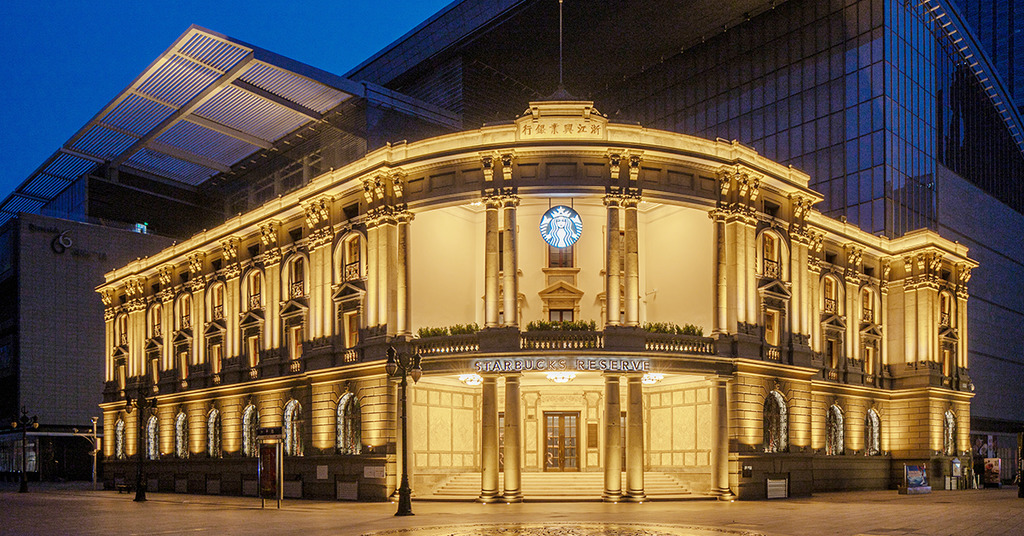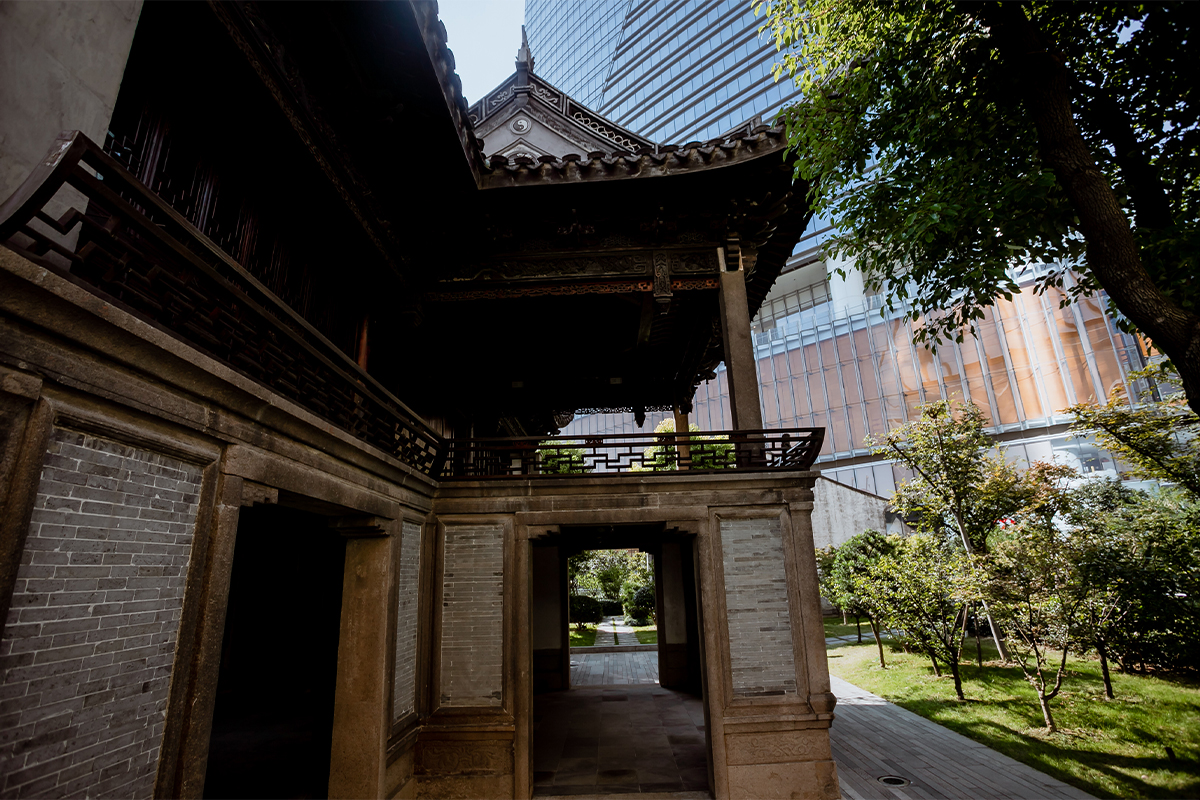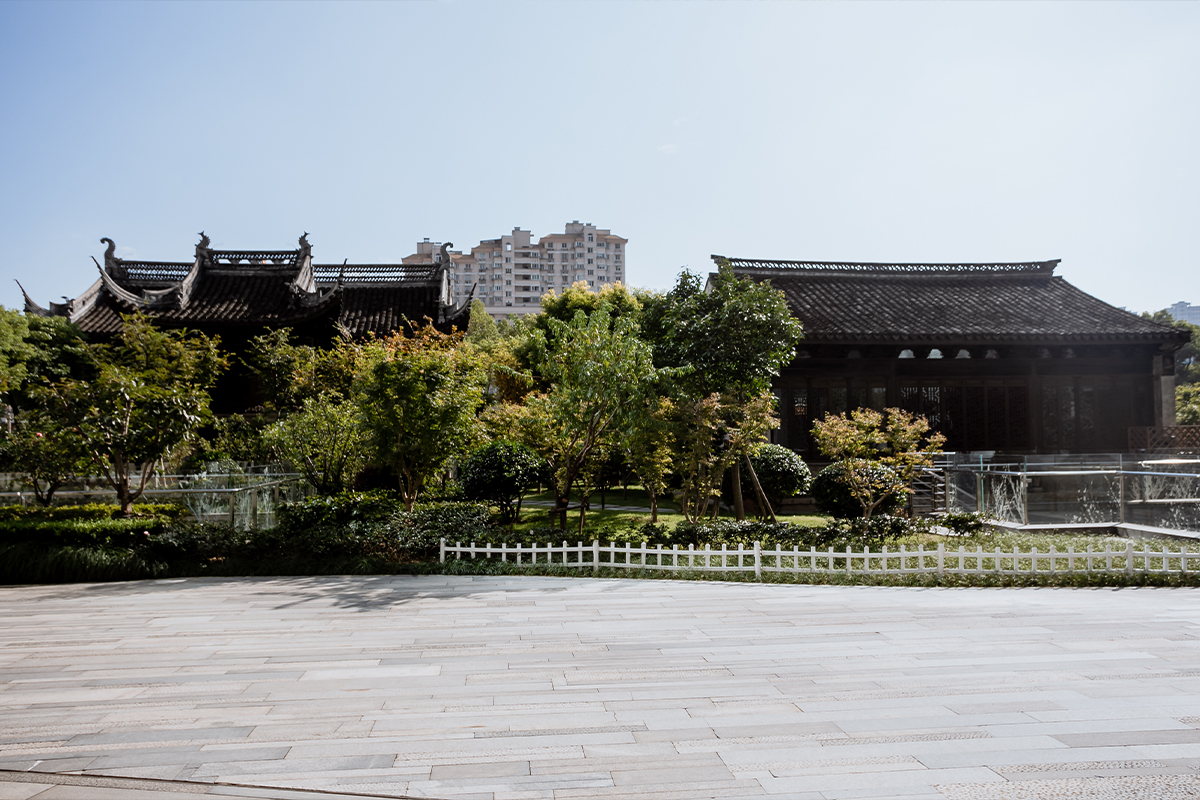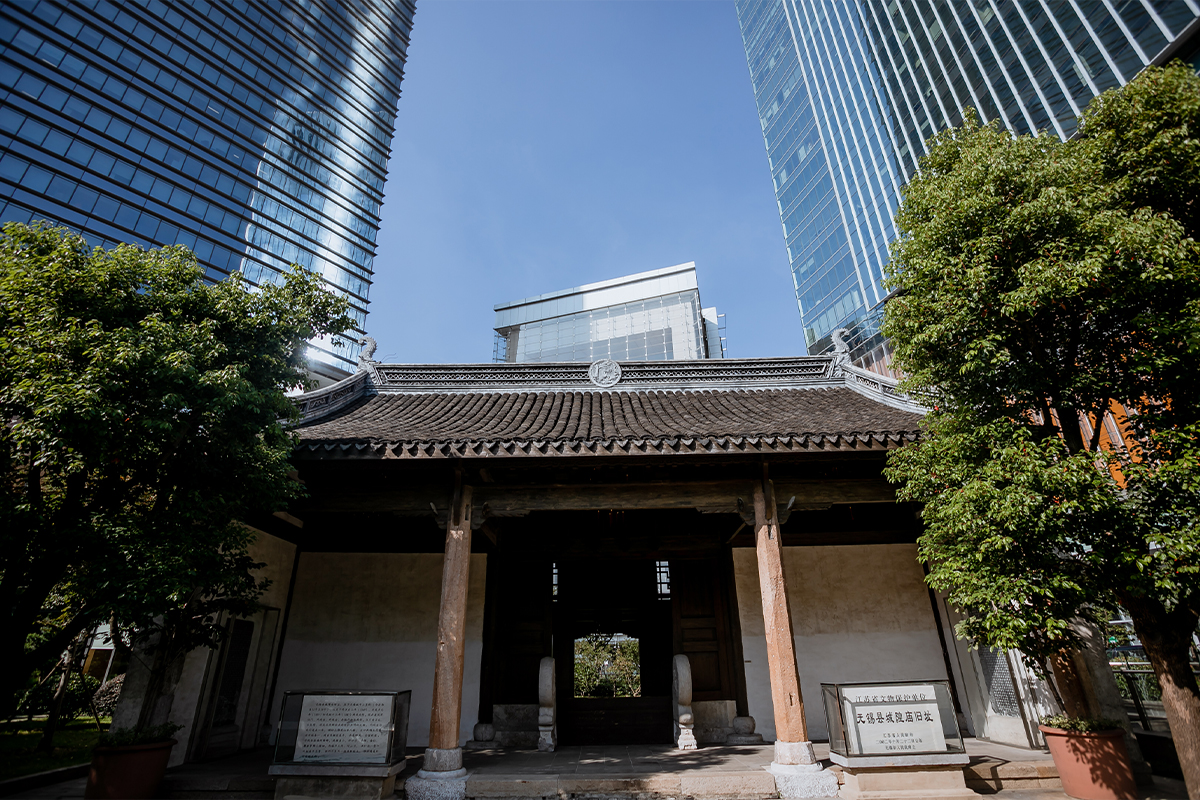Zhejiang Xingye Bank, Riverside 66, Tianjin
Riverside 66 is situated in Tianjin’s busiest commercial district on Heping Road. At the southeast corner of the project is an old building, Zhejiang Xingye Bank building, which was built in 1922 and has a blend of Chinese and Western architectural styles.
With Hang Lung's commitment to sustainable development, the Company has injected new life into the nearly-century-old building by restoring its exterior and interior to its original splendor.
The building had been deteriorating for years, and water leaking in the basement posed a great challenge to the work team. In order to build a new waterproof layer, pumps were used to remove the water from the basement. Supporting pillars were built into the main walls of the structure to strengthen the foundations. During the restoration, the team found that many architectural features had been lost or damaged. Workers put a great effort into repairing and replicating these features, such as wooden engravings on the walls and window frames. All the glass and windows were replaced by double-layered glazing to reduce energy consumption in winter.
New facilities have also been installed in order to conform to current fire safety regulations. Contemporary business management strategies are engaged in the management of the restored building, mixing the old and new so as to create a unique DNA for the project. The restoration project took months of dedication and hard work to finish. Customers can now stroll between the modern iconic landmark and the distinguished historical building, enjoying a one-of-a-kind experience of both shopping and culture.


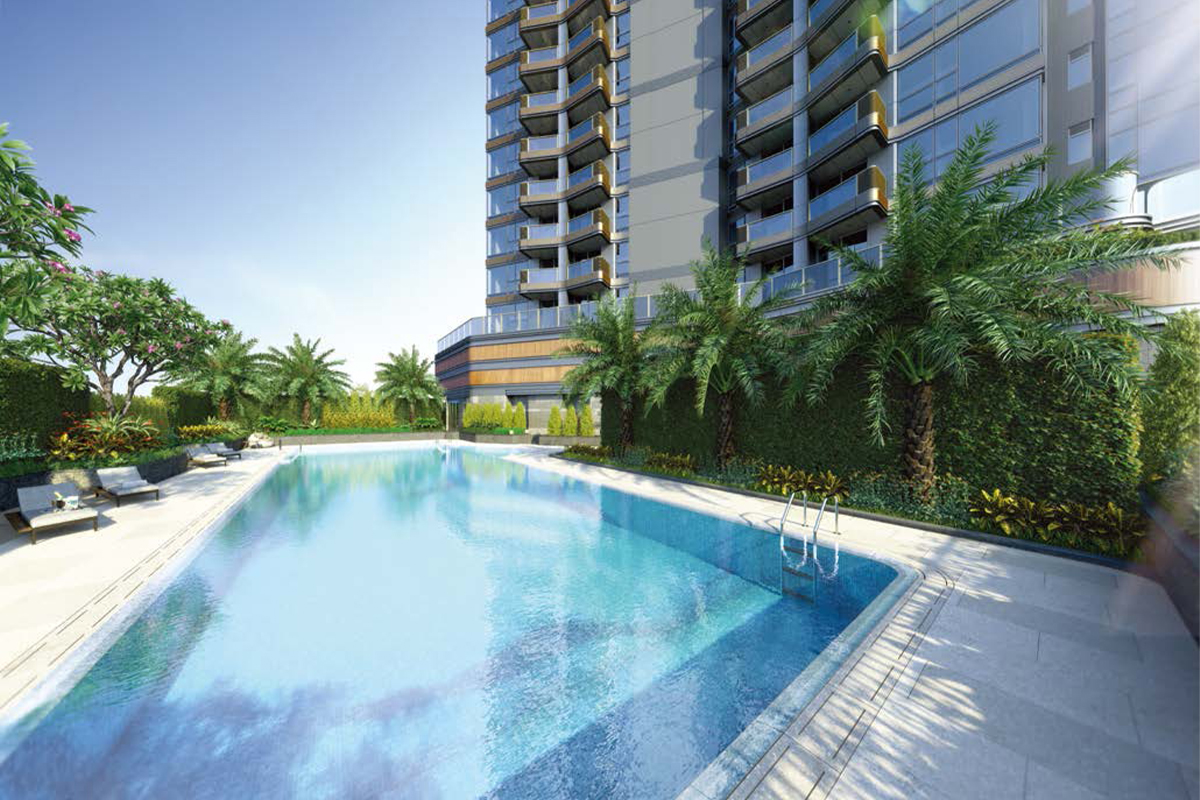
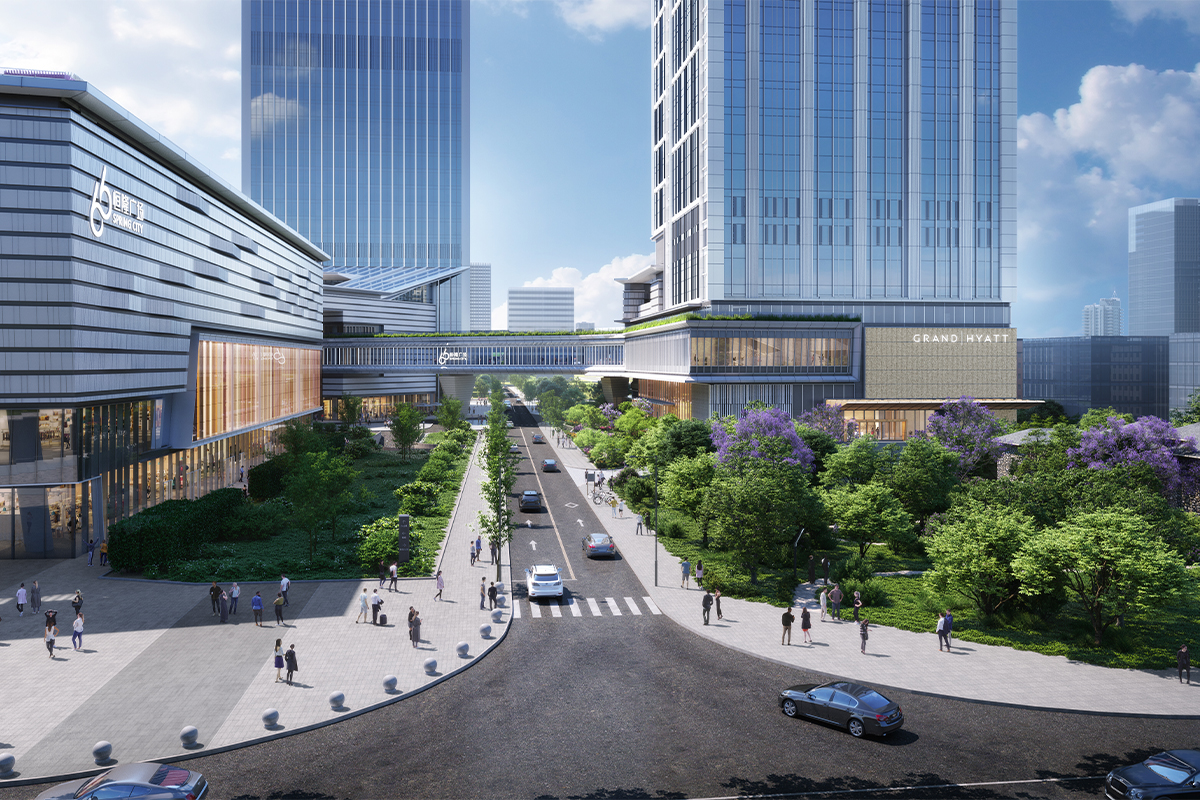
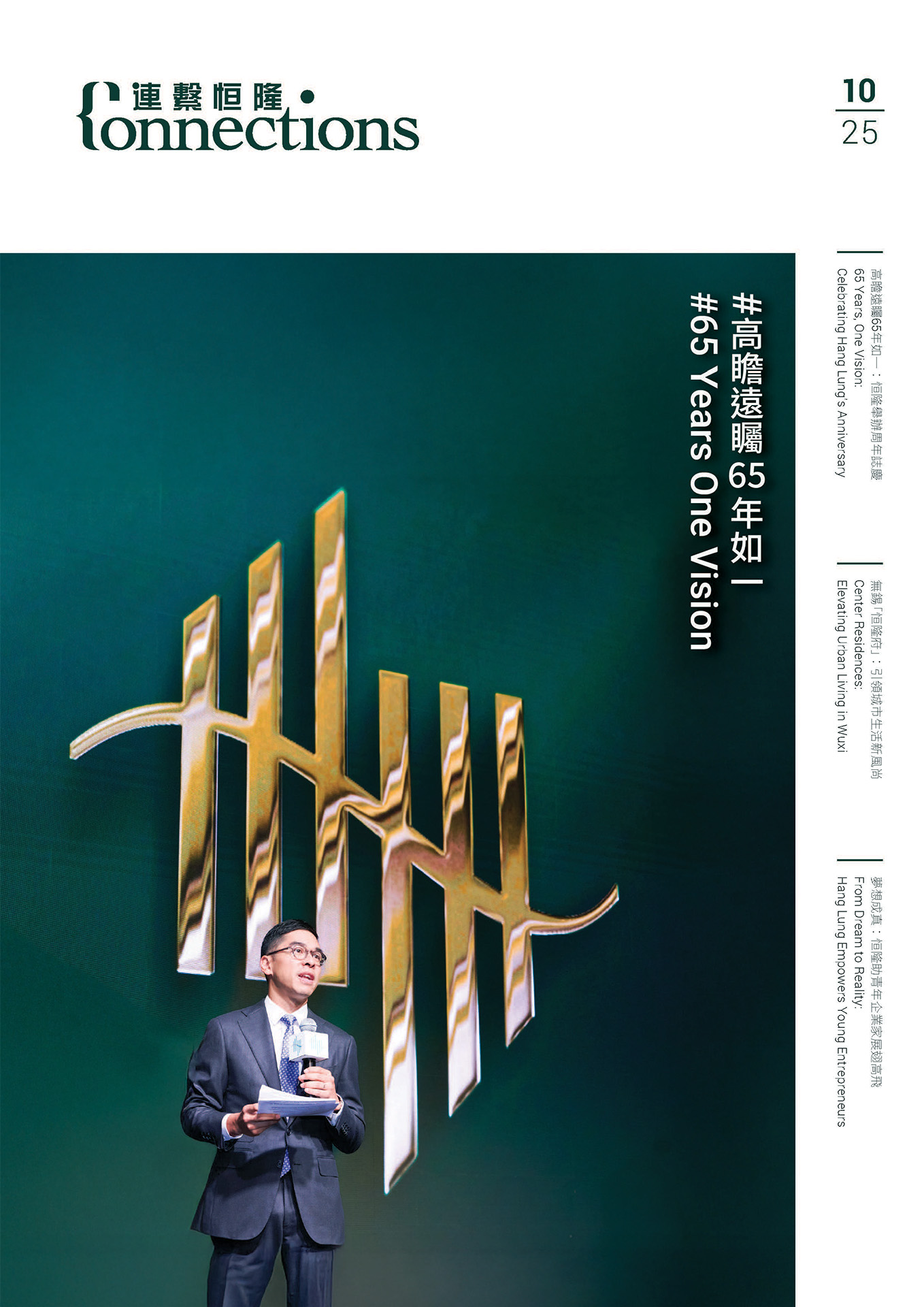
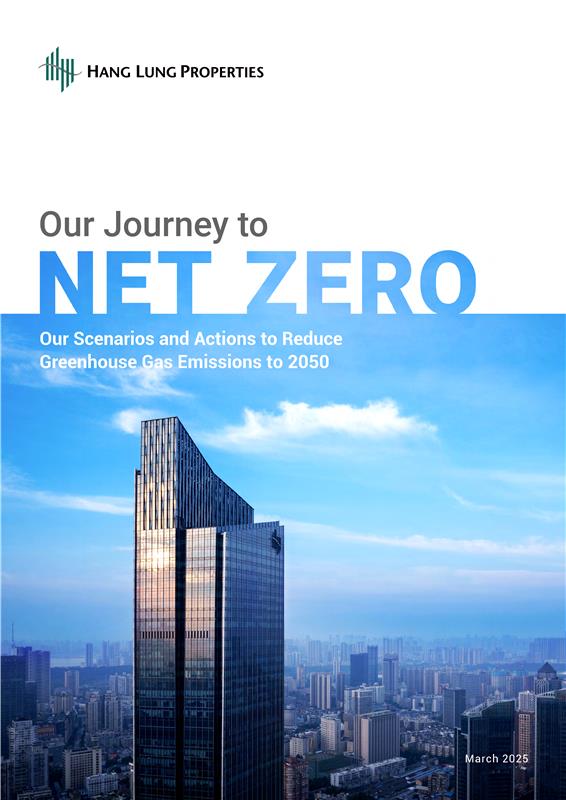.png)
